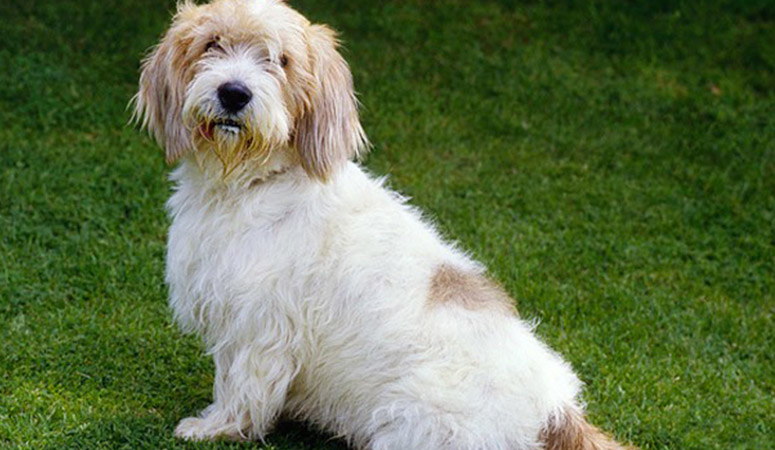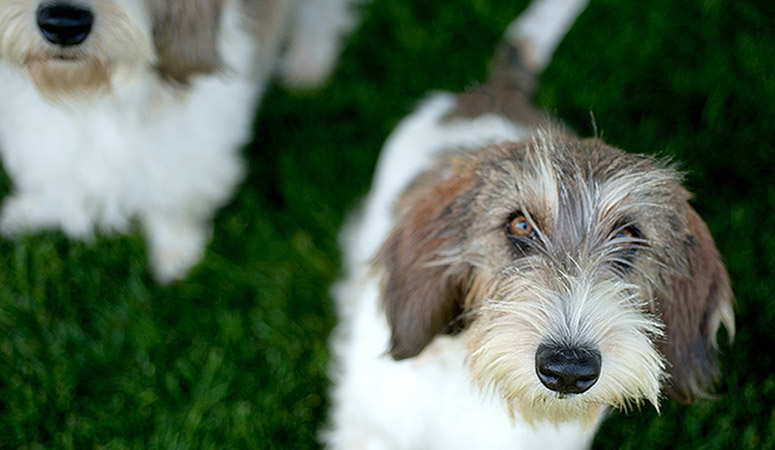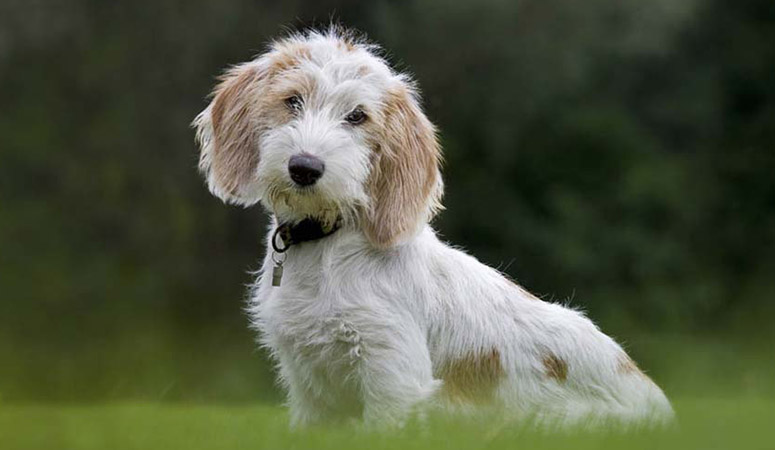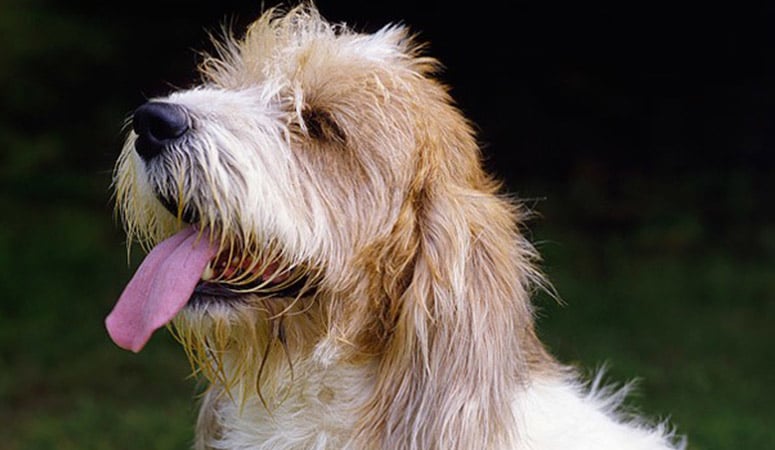Petit Basset Griffon Vendéen
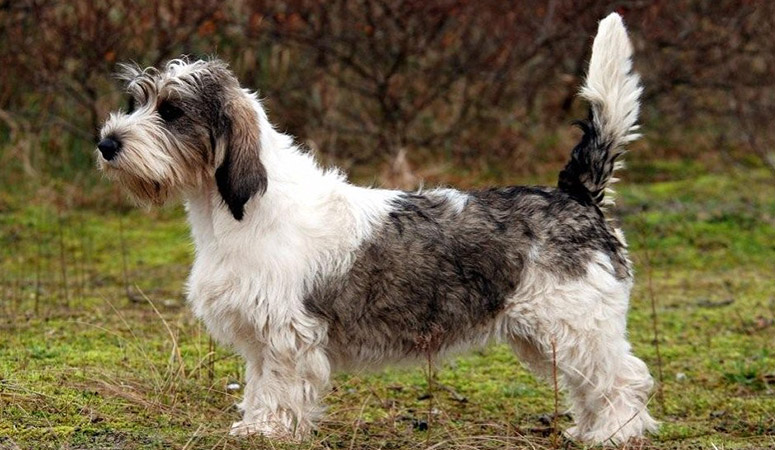
The Petit Basset Griffon Vendéen was developed to hunt rabbits through thick underbrush, originated from France. They hunt in packs and have the tenacity and energy to pursue their quarry all day. The dog’s alert and friendly expression reflects this breed’s true nature. They love to company his family and often give a tail-wagging welcome to friends and strangers.
| Other Names | Basset Griffon Vendeen, Petit, Kleiner Basset Griffon Vendeen, PBGV, Pequeno Basset Grifon Vendeano |
| Color | Black & Tan, White & Black, White & Gray, White & Grizzle, White & Lemon, White & Orange, White & Sable, White Black & Tan |
| Height | Males: 13-15 inches. Females: 13-15 inches. |
| Weight | Males: 35-45 pounds. Females: 35-45 pounds. |
| Life Span | 12-14 years |
| Personality | Alert, Happy, Vivacious |
| Exercise | Needs Lots of Activity |
| Origin |
| Popularity | #152 |
| Groom Needs | Weekly Brushing |
| Kids Friendly | Yes |
| Dog Friendly | Yes |
| Watch Dog | |
| Family Dog | |
| Litter Size | 4 – 6 puppies |
Petit Basset Griffon Vendéen Pictures
Petit Basset Griffon Vendéen Video
Introduction
The Petit Basset Griffon Vendeen is truly just the cutest looking little dog; winning you over with those round, friendly, and happy eyes. And you get an adorable companion because that’s what he loves doing, being with you and trying to please you. Just be careful though, too little attention and this dog can get into some excessive digging and barking. With kids, he is gentle and kind. The color of his coat is black and tan, fawn, and white, tri-color, black and white, or fawn and black. He stands at around 15 inches and weighs around 44 pounds. To brush this cutie pie, you will need a pin brush and a 2-in-1 comb. You just wet his coat with a water mist from a spray bottle. Start at his shoulders, go through his coat with the brush, and then move in the direction of the hair growth. Work through any matting with your fingers, continuing with the comb. He is stubborn and clever and will need someone who love him and laugh at his antics and still are firm with him, but not harsh. He is not suitable for novice dog owners or couch potatoes. He just spreads happiness and fun, this gorgeous friend!
Living with Petit Basset Griffon Vendéen
The PBGV’s rough coat has a harsh texture and a thick, short undercoat. It is long, but not excessively so, and he needs a minimum of grooming. Start grooming a PBGV puppy at an early age so he becomes used to it and accepts it willingly.
Weekly brushing can help remove any dead hair and tangles, and neaten stray hairs in front of the eyes as needed. His coat requires only a monthly bath and the occasional trim.
He’s definitely meant to be a no-fuss dog, but it doesn’t hurt to wipe his beard after he eats or drinks to help keep it clean.
Trim the nails as needed, usually once a month if the dog does not wear down the toenails naturally. Brush the teeth frequently with a vet-approved pet toothpaste for good overall health and fresh breath.
Check the ears weekly for dirt, redness or a bad odor that can indicate an infection. If the ears look dirty, wipe them out with a cotton ball dampened with a gentle, pH-balanced ear cleaner recommended by your veterinarian.
A healthy, adult Petit Basset Griffon Vendéen requires at least an hour of vigorous activity every day. Several long walks or hikes, and boisterous games in the yard will suffice to keep him physically fit. He must have plenty of room to wander and explore.
This dog likes being the center of attention and belongs indoors with his family. He’ll always need company because his barking tendencies worsen when he’s left alone. If you give the PBGV enough exercise throughout the day, he’ll be mellow at home and even adapts well to apartment living.
The PBGV has an extraordinary sense of smell and an often irresistible urge to follow scents that interest him. He makes a good companion for a hiker, runner, or biker who enjoys an active partner on jaunts.
The more time your Petit spends outdoors, the better behaved he’ll be inside. Long walks and supervised backyard time are important. The breed’s nose and hunting instinct is strong, so the PBGV should not be allowed to run off-leash. A secure, fenced yard is best.
As a small-breed dog, the Petit Basset Griffon Vendeen has higher energy needs than larger dogs. They should do well on high-quality dog food, whether commercially manufactured or home-prepared with your veterinarian’s supervision and approval. Generally, this breed requires about 1.5 to 2 cups of good quality dry dog food each day, given in two feedings.
Any diet should be appropriate to the dog’s age size, activity level and metabolism. The quality of dog food you buy also makes a difference — the better the dog food, the further it will go toward nourishing your dog and the less of it you’ll need to shake into your dog’s bowl.
Some PBGVs are prone to getting overweight, so watch your dog’s calorie consumption and weight level. Treats can be an important aid in training, but giving too many can cause obesity.
Clean, fresh water should be available at all times.
Learn about which human foods are safe for dogs, and which are not. Check with your vet if you have any concerns about your dog’s weight or diet.
PBGVs are generally healthy, but like all breeds, they’re prone to certain health conditions, such as hip and elbow dysplasia, patellar luxation, hypothyroidism. Also they may suffer from eye conditions, including persistent pupillary membranes, retinal dysplasia, and corneal dystrophy.
Not all PBGVs will get any or all of these diseases, but it’s important to be aware of them if you’re considering this breed. The leading causes of death were cancer and old age.
As with all breeds, the PBGVs’ ears should be checked regularly for signs of infection, and the teeth should be brushed often, ideally every day, using a toothpaste formulated for dogs.
There are several health tests considerations specific to the breed, such as POAG DNA testing and ophthalmologist evaluation.
Responsible breeders test all breeding stock for conditions that can affect the breed. Regular visits to the vet for checkups and parasite control help to ensure the dog a long, healthy life.
Total Annual Cost: $2889
Cost is estimated for the first year and may vary depending on many factors, such as dog food, health care, leash, collar, licensing, possible fencing, crates, training and obedience classes, dog-walking, grooming, treats, toys, flea, tick, and heart-worm meds, microchips, etc.
PBGVs have a reputation for being hard to train. In fact, they are very intelligent, so it should respond quickly to training. But they tend to have a mind of their own. Extracurricular dog sports are an excellent way to focus this breed’s abundant energy. PBGVs are enthusiastic participants in agility, rally, and advanced obedience.
While eager to please, the Petit Basset Griffon Vendéen has a short attention span that can prolong training. With consistency, positive reinforcement, and brief training sessions, however, your PBGV will respond to commands in no time. Keep in mind that your PBGVs will always ignore you if they’ve caught an interesting scent.
You should use positive reinforcement based training methods and maintain a firm and consistent hand in training to prevent problems in training your Petit Basset. The earlier you start training and socializing your dog, the better.
Socialization and obedience training should begin early and will teach the PBGV to be a good companion and canine citizen. The trainer must stay one step ahead in keeping his dog entertained and interested in what he is trying to teach. It is not that the PBGV is not eager to please; he is.
History
This lovely little dog, the Petit Basset Griffon Vendeen originates in France from the region of Vendeen in the 1500s. It was bred to hunt hare and rabbit.
What does the long name, Petit Basset Griffon Vendeén actually mean – well, in French, it means “small, low, and rough-coated from Vendéen.” And that’s just what he is. He is also known as a PBGV.
Because the land he worked on was covered in rocks, thick brambles, and underbrush, the right dog needed a thick, tough coat and short legs to speed through the underbrush to chase rabbits. This dog fitted the bill perfectly, and also never seemed to get tired doing it!
It could be that the PBGV might have been associated with the Basset Hound during the mid-1800s in England, albeit the PBGV was nimbler and his legs were longer.
PBGVs were imported to the United States in 1983 by Mrs. Elizabeth Streeter of Pennsylvania. There was great interest shown in the breed when a 12-week old puppy called Alexander defeated 3,000 other dogs at the “Super Match” to win “Best in Match.”
The American Kennel Club officially recognized the breed in 1990.
Helpful Information
Breed Club: PETIT BASSET GRIFFON VENDÉEN CLUB OF AMERICA
Breed Club Link: https://www.pbgv.org/
Breed Club Rescue: PBGV Rescue
Breed Club Rescue Link: https://www.pbgv.org/BreedInfo/rescue.shtml

